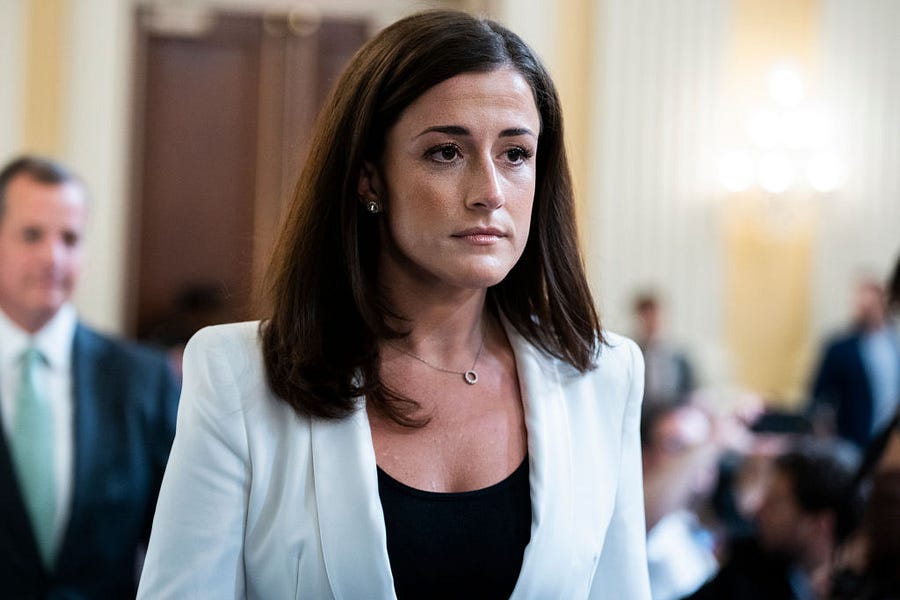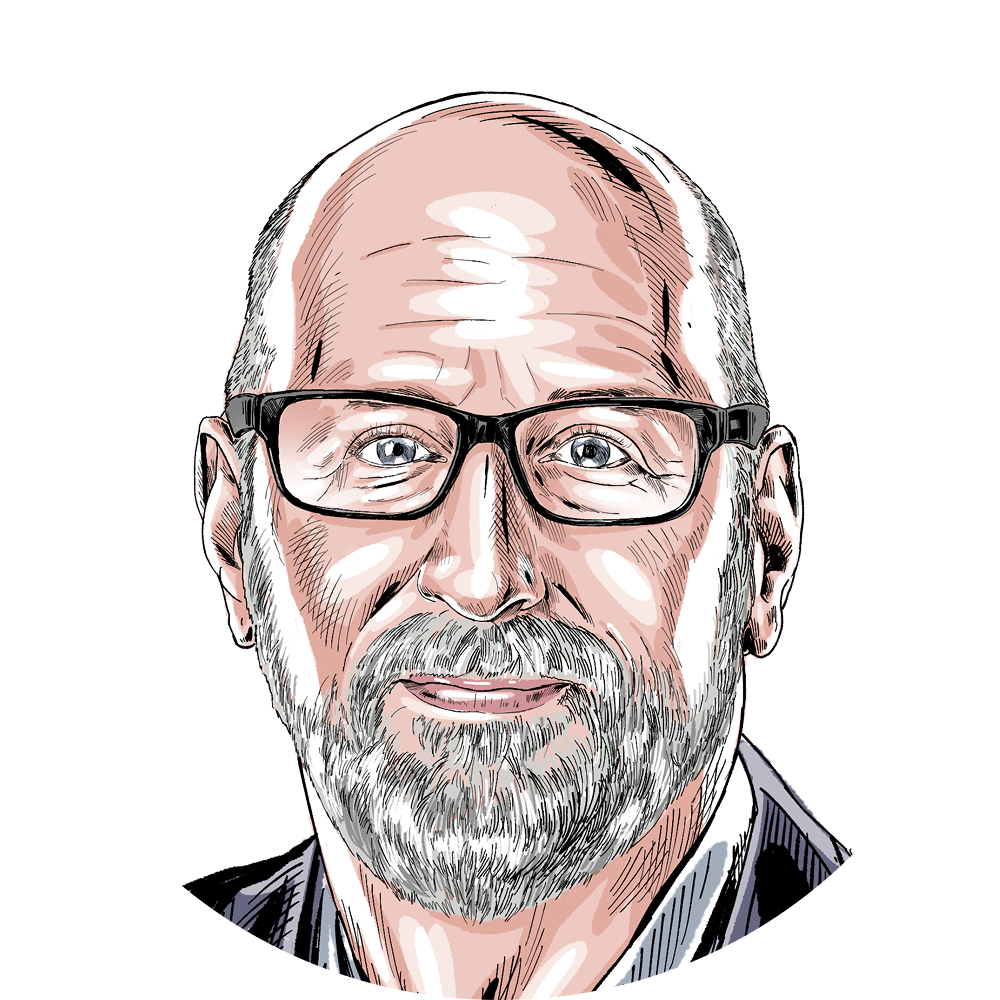I confess that I’ve been skeptical that the January 6 committee would produce evidence that Donald Trump was directly criminally responsible for the attack on the Capitol. Certainly he was morally and politically responsible. There’s no credible argument that a mob would have stormed the Capitol if he had the basic decency to concede a race he clearly lost.
At the same time, it’s legally quite difficult to hold a politician responsible for the violence of his followers. The First Amendment is broadly protective even of political speech that outright advocates violence. There is (rightly) a very high constitutional barrier to criminally prosecuting any person for allegedly inciting violence. After all, the primary responsibility for a riot rests with the rioters—in the absence of direct command authority (like a general commands his troops), nobody can make a person riot.
Before today, I’ve been open to the possibility that Donald Trump’s speech and conduct on and before January 6 criminally incited the mob. I was open, but unconvinced. I spoke to a number of leading First Amendment experts, and they were even less open than me. Yes, Trump urged the mob to “fight like hell” and march on the Capitol, but he also said they should “peacefully and patriotically” make their voices heard. That caveat was likely enough to spare him from prosecution.
That was yesterday’s analysis. Today’s is different. Because of a courageous woman named Cassidy Hutchinson, a former aide to Mark Meadows.
Earlier this afternoon she gave the most extraordinary congressional testimony I’ve ever seen. She testified that the president was so committed to walking to the Capitol with his own supporters that he allegedly tried to grab the wheel of his Secret Service vehicle. She painted the picture of a president utterly out of control, a man so committed to preserving his own power that he approved of the riot and believed that Mike Pence deserved to face mob justice.
But the most legally significant testimony came in a few key sentences:
Hutchinson claims she overheard Trump say about the crowd, “You know, I don’t effing care that they have weapons. They’re not here to hurt me. Take the effing mags away. Let my people in. They can march to the Capitol from here. Let the people in. Take the effing mags away.”
As Jake Tapper noted, the “mags” refer to magnetometers deployed to keep armed individuals away from the president.
Trump has denied Hutchinson’s testimony in a series of “truths” (equivalent to a tweet) on his website, Truth Social. Moreover, it is important to attempt to corroborate Hutchinson’s sworn testimony by interviewing others who may have heard Trump’s words. But Hutchinson’s sworn testimony closes a gap in the criminal case against Trump, and Trump is closer to a credible prosecution than ever before.
To understand why, we have to go back to 1969 and a seminal Supreme Court case called Brandenburg v. Ohio. In Brandenburg, the Supreme Court reviewed a criminal conviction against a Ku Klux Klan leader for “advocat[ing] … the duty, necessity, or propriety of crime, sabotage, violence, or unlawful methods of terrorism.”
Ohio prosecuted him after he appeared on film in full Klan regalia with other members of the Klan. In one film a dozen men burned a cross. Another film showed six hooded men. Brandenburg delivered a speech in each film, promising a march on Washington then on Florida and Mississippi. The first speech mentioned the possibility of “revengeance” if the president continued to “suppress the white, Caucasian race.”
The Supreme Court overturned Brandenburg’s conviction, holding that even speech that threatened violence or disorder was protected by the First Amendment unless “such advocacy is directed to inciting or producing imminent lawless action and is likely to incite or produce such action.”
Note the elements of intentionality, likelihood, and imminence. The imminence element is easiest to satisfy. The mob was right there. It marched to the Capitol right away, even as Trump was speaking.
But what about intentionality and likelihood? Was the riot something that Trump did not anticipate and did not intend? Any criminal indictment of Trump would be complex and detailed, but at its heart would be a relatively simple story, one that goes like this:
First, Trump summoned the mob to Washington. While Trump is hardly the only organizer of the January 6 rally, he did explicitly call his supporters to Washington, and he did so in a way that implied mayhem. On December 19, 2020, he tweeted, “Big protest in D.C. on January 6th. Be there, will be wild.
Second, he knew the mob was armed and dangerous. This is Hutchinson’s key testimony. If her claims are true, he was so confident that the mob intended him no harm that he wanted to remove the “mags,” a key element of presidential security. He didn’t just know the mob was armed, he wanted it to be armed.
Third, he not only exhorted the mob to “fight like hell” and march on the Capitol, he reportedly attempted to lead it himself. Renato Mariotti, a former federal prosecutor, noted that Trump’s alleged attempt to wrestle the steering wheel of his SUV away from his driver “would be evidence of Trump’s state of mind when he engaged in earlier actions.”
Under this theory, Trump’s efforts would show that the attack on the Capitol was unfolding as he intended, and his own security was thwarting his effort to lead the mob.
Yet this allegation is ancillary to the main claims against Trump. Even if he didn’t try to commandeer his vehicle, he still plainly and clearly exhorted a mob he allegedly knew was armed to march on the Capitol.
Fourth, Trump further inflamed the mob while the Capitol attack was underway. One of the most compelling moments in previous hearings was the video evidence that the crowd “surged” immediately after Trump tweeted (during the heat of the fight) that “Mike Pence didn’t have the courage to do what was necessary.”
In light of this evidence, Trump’s admonition that the mob march “peacefully and patriotically” looks more like pro forma ass-covering than a genuine plea. It was a drop of pacifism in an ocean of incitement—especially considering other statements made by Trump allies before and during the January 6 rally itself:
Steve Bannon evoked the beaches of Normandy. Michael Flynn drew comparisons to Civil War battlefields and spoke of Americans who died for their country. Roger Stone called it a struggle “between the godly and the godless, between good and evil.” Rudy Giuliani called for “trial by combat.” Ali Alexander said it would be a “knife fight.”
These words render Trump’s admonition to “fight like hell” and his warning on January 6 that “you will never take back our country with weakness” even more ominous in context. Trump was not a man trying to stop a riot. The evidence continues to grow that he was instead stoking violence and inflaming the mob, all while doing the bare minimum to establish some degree of plausible deniability.
Criminal charges require both evidence and political will. The evidence against Trump continues to mount, both in Washington, D.C., and in Georgia, where there is substantial evidence supporting both federal and state charges for his effort to threaten and intimidate Georgia Secretary of State Brad Raffensperger to “find 12,000 votes.”
For law enforcement to indict a former president (and perhaps the frontrunner for the 2024 GOP nomination) would set a grave and potentially dangerous precedent. But there is another precedent that is perhaps more grave and more dangerous—deciding that presidents are held to lower standards of criminal behavior than virtually any other American citizen.
I don’t know if Trump will face criminal indictment, but after Cassidy Hutchinson’s courageous testimony, the case for prosecuting Trump is stronger than it’s ever been before.







Please note that we at The Dispatch hold ourselves, our work, and our commenters to a higher standard than other places on the internet. We welcome comments that foster genuine debate or discussion—including comments critical of us or our work—but responses that include ad hominem attacks on fellow Dispatch members or are intended to stoke fear and anger may be moderated.
With your membership, you only have the ability to comment on The Morning Dispatch articles. Consider upgrading to join the conversation everywhere.